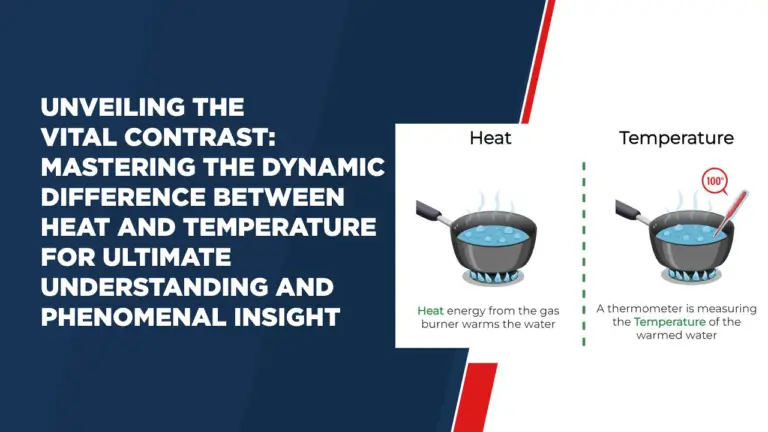Unlocking the Secrets: Mastering the Distinct Forces of Heat Transfer – Conduction, Convection, and Radiation Demystified!
Introduction
From cooking our food to controlling the temperature of our homes, heat transfer is a major aspect of everyday life. Heat can pass through three mechanisms – conduction, convection and radiation. We will further explore these concepts here to gain a clear understanding of their mechanisms as well as real-world applications.
What is Conduction, Convection, and Radiation?
- Conduction: The Dance of Molecules
Conduction is the process by which heat flows directly between particles of matter. For solids such as metals, this occurs when vibrating atoms transfer their energy to neighboring atoms, good conductors such as metals allow heat to dissipate easily due to their closely packed atomic structures – for example. Its handle becomes hot when placed in hot beverages. Quick – think of an empty metal spoon that gets hot at its handle when exposed to high temperatures!
2. Convection: Fluid Dynamics at Play
Convection is the transfer of heat through fluid motion such as liquids or gases. As density decreases due to heat and cooler fluid below rises to fill its space, a circular flow is formed that transfers heat evenly – like a stream of boiling water. How the pot rotates to cook food evenly over its surface area.
3. Radiation: Energy in Motion
Radiation, unlike conduction and convection, does not depend on mediums to transfer heat. Instead, electromagnetic waves such as infrared radiation carry energy directly. Radiation happens all around us all the time – the Sun radiating its heat into space is one example; Even objects inside rooms emit radiation which we experience as heat.
Examples of Conduction, Convection, and Radiation
- Conduction:
By walking on hot sand at the beach or holding an ice cube and feeling it melt in your hand.
- Convection:
Boiled water being passed between hot and cold reservoirs to form a cycle that never ends
- Radiation:
From feeling the warmth of the sun on your skin to using space heaters to warm a room, radiation provides heat for any climate or environment.
Applications of Heat Transfer – Conduction, Convection, and Radiation
Understanding these heat transfer mechanisms is crucial for various applications:
- Cooking:
Three primary methods for our food’s preparation – conduction in pots and pans, convection ovens and radiation grills all combine to cook our meals efficiently.
- Thermal Insulation:
An understanding of these mechanisms enables designers to create more effective insulation measures in buildings to keep them warm in winter and cool in summer.
- Electronic Devices:
Efficient heat sinks and fans employ both conduction and convection techniques to prevent devices from overheating.
Conclusion
Heat transfer occurs in three main ways – conduction, convection and radiation. By understanding and mastering these unique forces of heat transfer, we can harness their power for a wide variety of applications, from the joy of making simple coffee to the complex engineering of thermal systems; Heat transfer remains at the core of life on Earth.




